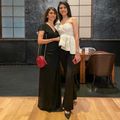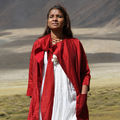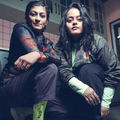Interviews
BioFach 2012: Eco friendly fashion still on the up
26 Sep '11
5 min read
The Textil-Area at BioFach in February 2011 delighted visitors with 44 green labels from nine countries and promises to be another real magnet for visitors from 15–18 February 2012, when the international organic sector gathers again at its world-leading exhibition in Nürnberg. This event is once again expected to attract a total of around 2,500 exhibitors and 44,000 trade visitors to the exhibition site.
Green is in fashion – if not as a colour, then at least as a quality term for textiles manufactured using environment-friendly and ethically correct production processes. Germany now has over 100 fashion labels dedicated entirely to the green philosophy. The pioneers in the sector paved the way. The newcomer labels can take the credit for freeing green fashion from its muesli image and have attractively designed clothes for a broad-based and young clientele. Products from the fashionable segment are sold in just under 40 specialist concept stores – twice as many as in 2010.
It can be seenthat more new shops are opening in the city centres and their sales areas are growing. Retailers are confident that their model goods have also come to stay in the main shopping streets. Experts are currently discussing how far the fashion aspect of ecologically produced textiles should be increased and trends taken up. “Critical customers want modern design on the one hand, but on the other do not want to chase after every short-lived trend, which leads to excessively way-out clothing that is no longer worn next season,” explains eco-fashion expert Dr. Kirsten Brodde. This is certainly a difficult balancing act.
In order to make young designers aware of this subject too, more and more fashion schools are including ecology and ethics in their syllabuses or even devoting separate courses of study to green fashion. But what distinguishes ecologically and ethically correct fashion from merely “greenwashed” clothing? Is an organically grown raw material sufficient? Or should dyeing and printing also be correct? What about fair pay for the hard-working seamstresses at the end of the production chain?Retailers and above all consumers must possess a great deal of expertise to distinguish between all these aspects when buying. How many hazardous substances are still used in textile manufacture in the production countries of Asia was also shown recently in the Greenpeace Report entitled “Dirty Washing”. This also included some textile companies that according to their own conception already use environment-friendly processes.
29% more textiles from fair trade cotton
The Trend Study 2011 shows that today's consumers are concerned about more than just organic. Clothing should preferably not only be environment-friendly, but also manufactured under socially compatible conditions. Organic plus fairness – but this is not automatically the case at present. Sales of textiles of fair trade cotton grew by an encouraging 29 % in 2010. Altogether 2.6 million of these clothing items were sold in this period – until now 15 % of them also of organic cotton.
Green is in fashion – if not as a colour, then at least as a quality term for textiles manufactured using environment-friendly and ethically correct production processes. Germany now has over 100 fashion labels dedicated entirely to the green philosophy. The pioneers in the sector paved the way. The newcomer labels can take the credit for freeing green fashion from its muesli image and have attractively designed clothes for a broad-based and young clientele. Products from the fashionable segment are sold in just under 40 specialist concept stores – twice as many as in 2010.
It can be seenthat more new shops are opening in the city centres and their sales areas are growing. Retailers are confident that their model goods have also come to stay in the main shopping streets. Experts are currently discussing how far the fashion aspect of ecologically produced textiles should be increased and trends taken up. “Critical customers want modern design on the one hand, but on the other do not want to chase after every short-lived trend, which leads to excessively way-out clothing that is no longer worn next season,” explains eco-fashion expert Dr. Kirsten Brodde. This is certainly a difficult balancing act.
In order to make young designers aware of this subject too, more and more fashion schools are including ecology and ethics in their syllabuses or even devoting separate courses of study to green fashion. But what distinguishes ecologically and ethically correct fashion from merely “greenwashed” clothing? Is an organically grown raw material sufficient? Or should dyeing and printing also be correct? What about fair pay for the hard-working seamstresses at the end of the production chain?Retailers and above all consumers must possess a great deal of expertise to distinguish between all these aspects when buying. How many hazardous substances are still used in textile manufacture in the production countries of Asia was also shown recently in the Greenpeace Report entitled “Dirty Washing”. This also included some textile companies that according to their own conception already use environment-friendly processes.
29% more textiles from fair trade cotton
The Trend Study 2011 shows that today's consumers are concerned about more than just organic. Clothing should preferably not only be environment-friendly, but also manufactured under socially compatible conditions. Organic plus fairness – but this is not automatically the case at present. Sales of textiles of fair trade cotton grew by an encouraging 29 % in 2010. Altogether 2.6 million of these clothing items were sold in this period – until now 15 % of them also of organic cotton.
Popular News
Leave your Comments
Editor’s Pick
































-Ltd..jpg?tr=w-120,h-60,c-at_max,cm-pad_resize,bg-ffffff)





.jpg?tr=w-120,h-60,c-at_max,cm-pad_resize,bg-ffffff)
.jpg?tr=w-120,h-60,c-at_max,cm-pad_resize,bg-ffffff)






